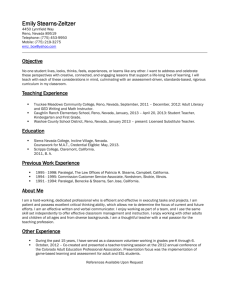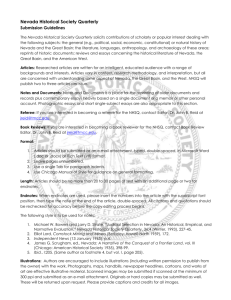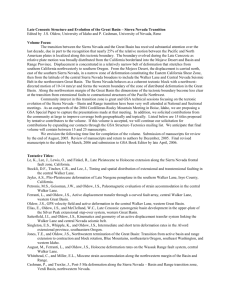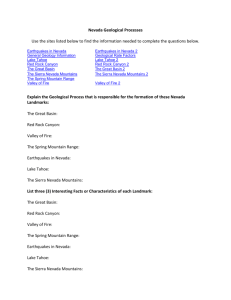Walker Basin Project Field Day and Barbecue on August 21
advertisement
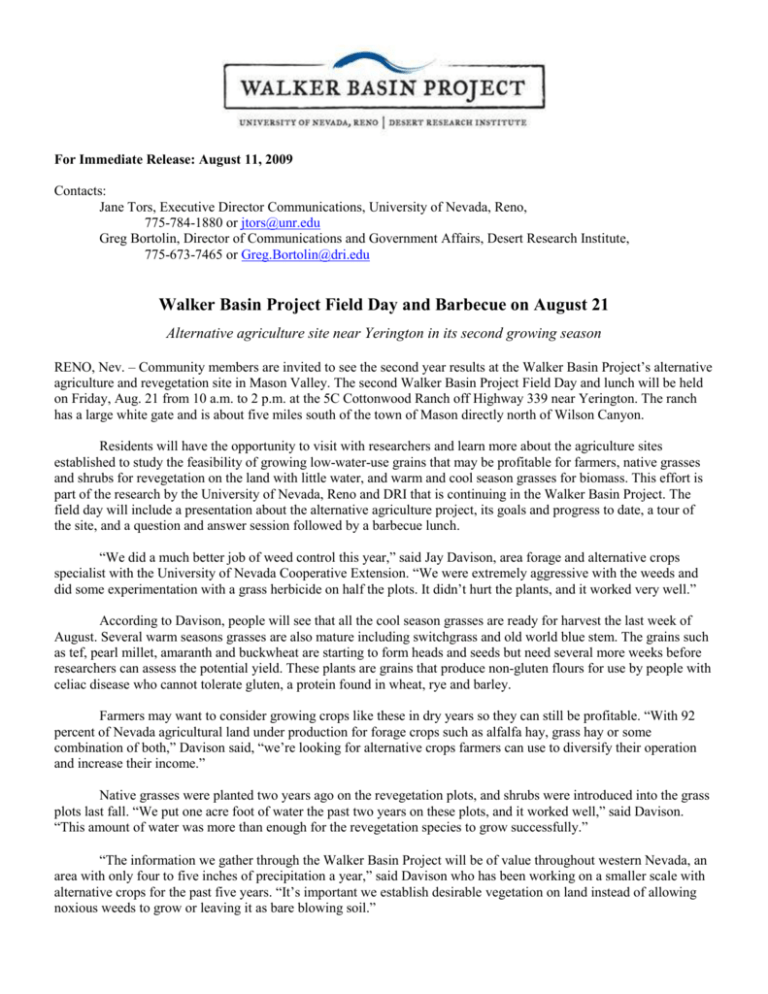
For Immediate Release: August 11, 2009 Contacts: Jane Tors, Executive Director Communications, University of Nevada, Reno, 775-784-1880 or jtors@unr.edu Greg Bortolin, Director of Communications and Government Affairs, Desert Research Institute, 775-673-7465 or Greg.Bortolin@dri.edu Walker Basin Project Field Day and Barbecue on August 21 Alternative agriculture site near Yerington in its second growing season RENO, Nev. – Community members are invited to see the second year results at the Walker Basin Project’s alternative agriculture and revegetation site in Mason Valley. The second Walker Basin Project Field Day and lunch will be held on Friday, Aug. 21 from 10 a.m. to 2 p.m. at the 5C Cottonwood Ranch off Highway 339 near Yerington. The ranch has a large white gate and is about five miles south of the town of Mason directly north of Wilson Canyon. Residents will have the opportunity to visit with researchers and learn more about the agriculture sites established to study the feasibility of growing low-water-use grains that may be profitable for farmers, native grasses and shrubs for revegetation on the land with little water, and warm and cool season grasses for biomass. This effort is part of the research by the University of Nevada, Reno and DRI that is continuing in the Walker Basin Project. The field day will include a presentation about the alternative agriculture project, its goals and progress to date, a tour of the site, and a question and answer session followed by a barbecue lunch. “We did a much better job of weed control this year,” said Jay Davison, area forage and alternative crops specialist with the University of Nevada Cooperative Extension. “We were extremely aggressive with the weeds and did some experimentation with a grass herbicide on half the plots. It didn’t hurt the plants, and it worked very well.” According to Davison, people will see that all the cool season grasses are ready for harvest the last week of August. Several warm seasons grasses are also mature including switchgrass and old world blue stem. The grains such as tef, pearl millet, amaranth and buckwheat are starting to form heads and seeds but need several more weeks before researchers can assess the potential yield. These plants are grains that produce non-gluten flours for use by people with celiac disease who cannot tolerate gluten, a protein found in wheat, rye and barley. Farmers may want to consider growing crops like these in dry years so they can still be profitable. “With 92 percent of Nevada agricultural land under production for forage crops such as alfalfa hay, grass hay or some combination of both,” Davison said, “we’re looking for alternative crops farmers can use to diversify their operation and increase their income.” Native grasses were planted two years ago on the revegetation plots, and shrubs were introduced into the grass plots last fall. “We put one acre foot of water the past two years on these plots, and it worked well,” said Davison. “This amount of water was more than enough for the revegetation species to grow successfully.” “The information we gather through the Walker Basin Project will be of value throughout western Nevada, an area with only four to five inches of precipitation a year,” said Davison who has been working on a smaller scale with alternative crops for the past five years. “It’s important we establish desirable vegetation on land instead of allowing noxious weeds to grow or leaving it as bare blowing soil.” To make a reservation to attend the field day and barbecue, call the University of Nevada Cooperative Extension office in Fallon at 775-423-5121. For more information about the Walker Basin Project, visit www.nevada.edu/walker/. ### The Walker Basin Project is a comprehensive, research-guided project to sustain the Basin's economy, ecosystem and lake. Walker Lake is one of only three desert terminal lakes in North America with a fresh water fishery. This federally funded project involves collaborative environmental and economic research conducted by researchers with the Desert Research Institute and the University of Nevada, Reno. It also involves the acquisition of water and water rights from willing sellers under the coordination of the Nevada System of Higher Education. The research is exploring the best means by which to get additional water to the lake while maintaining the Basin's economy and ecosystem.

